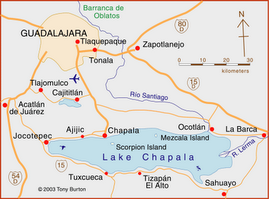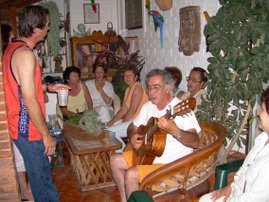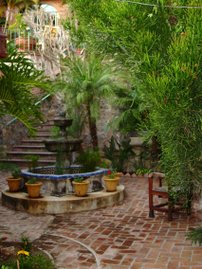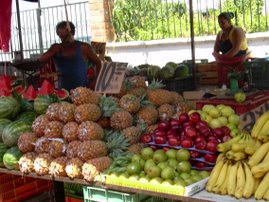May 30: We made it! The border crossing was easy; we were able to bring in our carload of stuff without paying any duty, and we were able to obtain our car import sticker with no problem. Everyone was kind and helpful. The 750 mile trip down through Mexico was both stunningly beautiful and heartwrenchingly sad. The conditions under which the very poor Mexicans live is unimaginable to those of us who have lived in such a prosperous country. In any event, we made it to Ajijic yesterday afternoon, exhausted after 3550 miles but full of gratitude to be here. Our little dog Maggie loves all the new sounds and smells. Our house is not ready for another day or so, so we are staying at the B&B with our landlord. Once we get into the house, I'll post some new photos and observations. I'll try to make future posts a bit more interesting and not just a list of what we're doing like this trip log has been. Please email and keep in touch. You can add comments to the blog, but remember, everyone can read them :})
May 27: Crossing tomorrow morning. Will be off line for a few days. Will post next from Ajijic!
May 26: We visited our family in Port Aransas, on the Gulf coast, including my very special Aunt Alice. We enjoyed some succulent gulf shrimp expertly prepared by Gerry. Tomorrow we head down to Harlingen to prepare for our border crossing. I hope we have all our documents in order!
May 25: Still in Texas about 100 miles north of Corpus Christi. Driving through Texas is tedious...lots of BIG Baptist churches and BBQ pits. East Texas is greener than we had imagined. Will drive down to Port Aransas near Corpus Christi today to visit my cousin Martha, her husband Gerry, and my Aunt Alice who is visiting from Indianapolis. Then tomorrow we finish our drive through Texas to Harlingen TX near the border for an early morning crossing Monday at the Los Indios crossing.
May 24: We have arrived in Texas after a long drive through Arkansas. We stopped to see Bill Clinton's birthplace, Hope, Arkansas. Tomorrow we'll head directly south on some back roads on our way towards Corpus Christi.
May 23: After enjoying a wonderful four days with Eric and Crystal, we had a long drive today (450 miles) and arrived in Arkansas this evening. Tomorrow we're hoping to cross over into Texas.
May 21: We've been enjoying some wonderful Hoosier hospitality and some R and R with Eric and Crystal. Finally, some warm weather too. We have been hearing from some of our Maine friends and family. We're off on Wednesday morning to Texas to visit my cousin Martha, and plan to cross the border on May 28 or 29.
May 19: Arrived safely in Muncie, Indiana to visit our son, Eric, and daughter-in-law Crystal.
May 18: Great visit with my friend from Brown, Dennis Sykes and his wife Deb and their son, Craig at their Centerburg, Ohio home. Dennis is still the Mayor of Centerburg, and Deb the resident piano teacher.
May 17: Visit to Niagara Falls, NY. Pixie had never seen the falls. They were impressive; I was surprised how economically depressed the area is.
May 16: In Seneca Falls, NY: the National Women's Rights Historical Museum, and Wesleyan Chapel, site of the first Women's Rights Conference in 1848.
May 15: Hyde Park , New York: Site of the FDR Presidential Library and Museum, FDR's home, and Val Kill, Eleanor's residence. FDR and Eleanor are our heroes!
May 14: Leave Maine after a lifetime of memories!






















































































